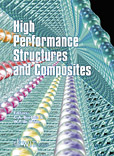Intensity-dependent Optical Absorption Property Of Composite Films Of Nanoparticulate Transition Metal Oxides And Transparent Oxides
Price
Free (open access)
Transaction
Volume
59
Pages
7
Published
2002
Size
360 kb
Paper DOI
10.2495/HPS020251
Copyright
WIT Press
Author(s)
M. Ando, K. Kamada, K. Ohta, P. Audebert, J.-F. Delouis, K. Nakatani & J. Delaire
Abstract
Two kinds of nanoparticulate transition metal oxide films with large nonlinear absorption, Co304 film without dispersed in glass, and composite film of Co3O4 nanoparticles and SiO2-ZrO2 glass, were prepared by RF sputtering technique and sol-gel/metal salt pyrolysis technique, respectively. Both Co3O4 film and Co3O4/[ SiO2-ZrO2] composite film showed large nonlinear (intensity-dependent) optical absorption in the visible-near IR wavelength region. In both films, strong laser irradiation at wavelengths of 355 m and532 nm brought about large increase of absorption (induced absorption) at wavelengths around 530-850 nm and decrease of absorption (bleaching) at around 400-450 m. Large induced absorption suggests the potentiality of those films for optical power limiting m the wide wavelength range. Damage threshold of the films against strong laser irradiation was at least thee times higher in the Co304/[Si02-Zr02] composite film compared with C0304 film not dispersed in glass. This improved durability against strong laser irradiation observed in the composite film is considered to be due to the diminution of increase of temperature i n the films on laser irradiation because of the presence of the unheated transparent oxide matrix surrounding the nanoparticles. Those results show that the composite structure of nanoparticulate transition metal oxide and transparent oxide is useful for improving optical power limiting materials.
Keywords





